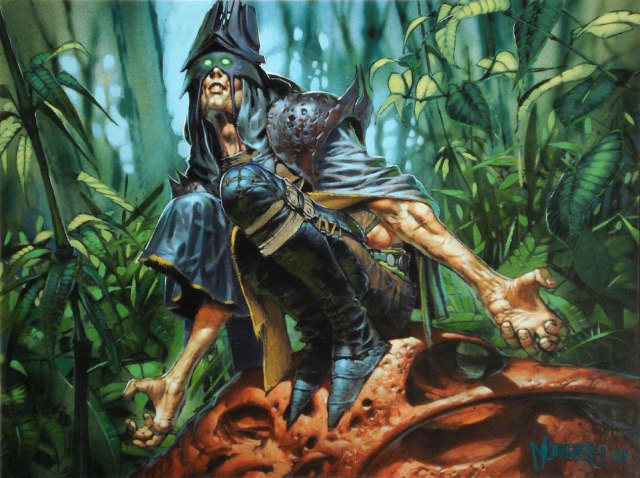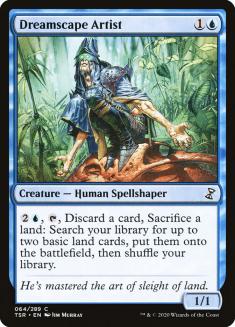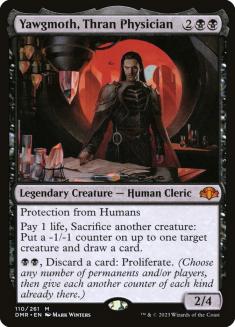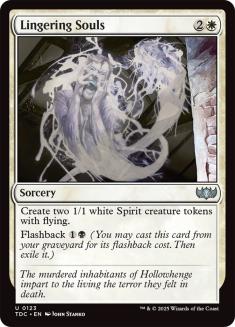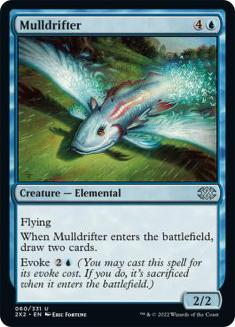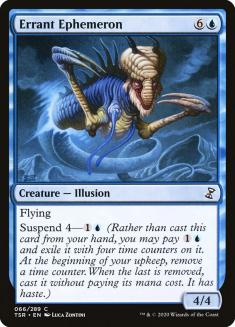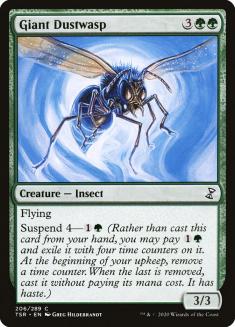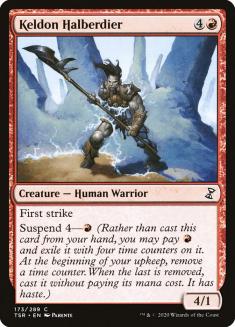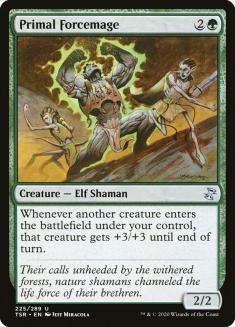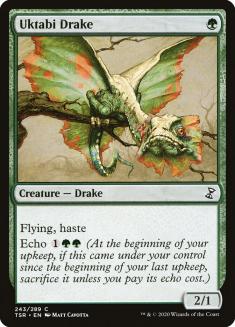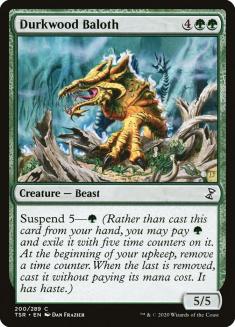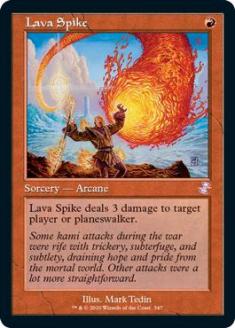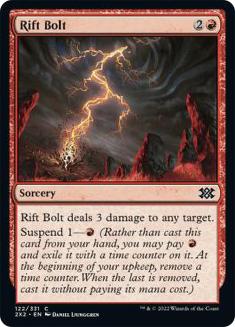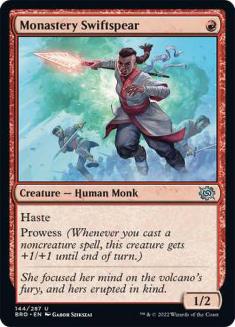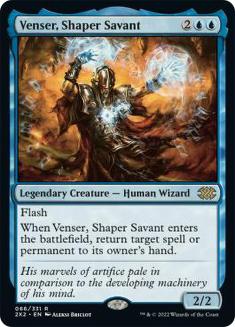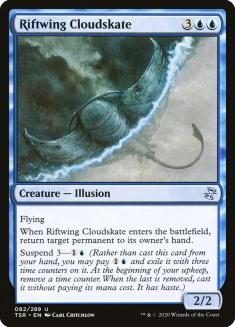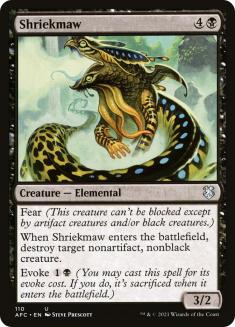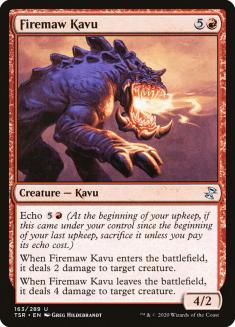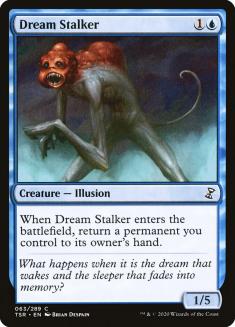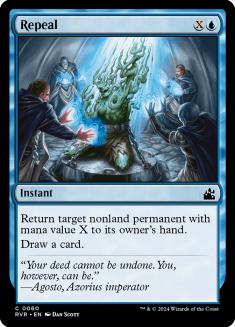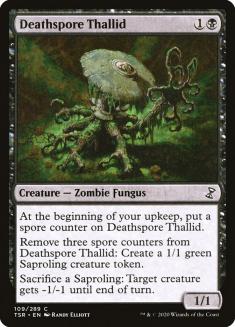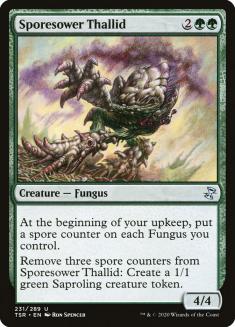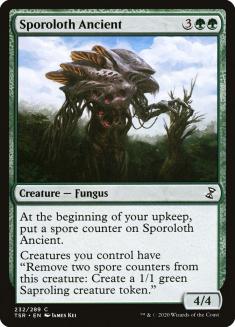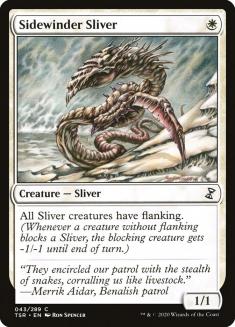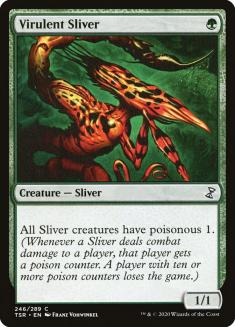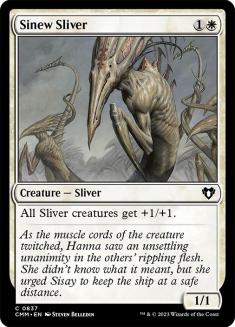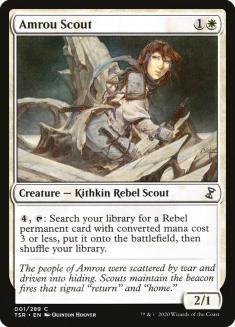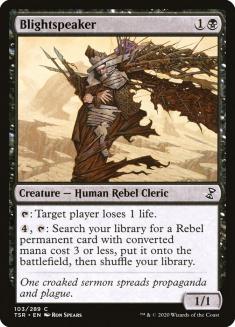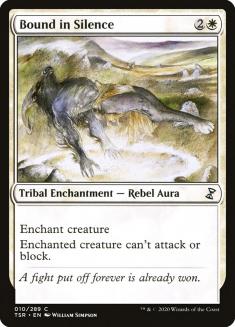This week marks the end of another run of the Magic Online (MTGO) Vintage Cube, which has proven to be as popular as ever even with it being offered at a more regular clip over the course of the last year. Even still, it does make sense to cycle through some different offerings and I’m pretty excited to get into some Time Spiral Remastered Supreme Draft for a week starting this Wednesday.
Supreme Draft is still a relatively new way to play, and you can find the Draft style’s inaugural article here. The long and short of it is that you build a deck out of two first picks from eighteen booster packs, which results in extremely high-power Limited decks. I’ve written on how to approach Vintage Cube Supreme Draft previously, and while Time Spiral Remastered has nowhere near the power level of Vintage Cube, a lot of the fundamental ideas hold true. You want your Supreme Draft decks to make even the best traditional Booster Draft decks look embarrassing by comparison. A good way to contextualize it is that you’re building Constructed decks by cracking packs, more or less the way Richard Garfield intended.
For my Cube breakdowns, I like to go by color and break down what each color is about, though after reflecting on Time Spiral Remastered and the nature of Supreme Draft, I’m going to do things a little bit differently today. Seeing as Supreme Draft decks for this format will have a lot in common with Block Constructed decks, I’ll instead be breaking down what I see as the most powerful styles of decks, and how I would go about drafting them. Before I get into that though, there are two fundamental truths about Time Spiral Remastered that will inform a lot of Limited decisions.
The Mana Isn’t Great
A lot of recent Magic sets have featured cycles of mana-fixing lands at common or uncommon, but Time Spiral Remastered doesn’t offer a ton in that regard. Terramorphic Expanse is in the set at common, though the storage lands at uncommon aren’t ideal mana-fixers. There aren’t rare duals or great mana-fixing options on the bonus sheet either. Chromatic Star and Prophetic Prism play, but are generally unexciting. I expect that the majority of my Supreme Draft decks will be two colors, with a particular blue common being the reason I would deviate from this.
If you haven’t played any sort of Time Spiral (or Ultimate Masters) Limited before then you may have never heard of Dreamscape Artist, but I assure you that it’s disgustingly powerful as both mana fixing and acceleration. A creature that lets you cast Harrow every turn can facilitate some pretty greedy splashes, and given that this ability requires discarding a card, the diminishing returns on drafting multiple Artists are pretty low as well.
Now for the other big truth.
Most of the Best Cards Are on the Bonus Sheet
Time Spiral block was largely a long list of inside jokes and references with some powerful cards peppered in, but it really didn’t push the power envelope at the time. The bonus sheet for Time Spiral Remastered consists of cards printed after the block, with a handful of them being more powerful than basically anything in the actual set. I’ll get to the cool themes and synergies that are primarily motivated by the actual original block, but just keep in mind that you’d really rather be playing True-Name Nemesis and Mystic Confluence than any of them. With one card from the bonus sheet in every pack and Supreme Draft giving you access to eighteen packs, you’re going to be playing with and against a lot of the bonus sheet cards.
Some of the bonus sheet cards play well into the themes of the set, and some of them are out of place and uninteresting for Limited, but the best cards on the sheet will heavily influence the environment whether they exploit synergies or not. Courser of Kruphix isn’t exactly Sprout Swarm, but it still generates card advantage, and most everything that generates card advantage on the bonus sheet should be picked very highly.
Given these two premises, I expect that decks consisting of Dreamscape Artists, Terramorphic Expanses, and assorted cards from the bonus sheet will be fairly common in Supreme Draft and will rack up a lot of wins. Some of us are going to open Silences and Field of Ruins though. Here are my notes on the various themes available in Time Spiral Remastered and their relative strengths and weaknesses.
Suspend
Suspend is one of those mechanics that isn’t necessarily good or bad for a card to have. Assessing cards with suspend revolves around how worth it is to either wait for a card to come off suspend or to cast the card for full retail. The commons included in Time Spiral Remastered tend to be examples of cards that are generally worth it on rate either way, and amusingly most of the rares are just kind of nonsense in Limited. I’m sure it’s cool when you pull off a game-winning Living End or Restore Balance, but Errant Ephemeron is a much more consistent performer than either.
There are some synergies to explore with suspend, though it’s important to strike a good balance on cards with suspend and cards that can materially impact the battlefield in the early turns. Jhoira’s Timebug looks like the sort of card you might want for a suspend-heavy deck, but you’ll have to dream bigger than that in Supreme Draft. The suspend synergies that I’m most interested in for Supreme Draft purposes are using Damnation while you have a couple of creatures on suspend or drafting a robust Primal Forcemage deck.
At uncommon, you don’t get to pull off cool Primal Forcemage tricks in Booster Draft too often, and on rate the card just isn’t up to snuff for Constructed. In Supreme Draft though, you’ll be able to get a bunch of Primal Forcemages from time to time and load up on suspend creatures and Uktabi Drakes to deal tons of damage out of nowhere.
In general, I don’t believe that trying to force decks that are heavy on suspend synergies will be all that effective, and mostly I imagine that you’ll end up there when you do because some of the suspend creatures will often be the best card in the pack. The Primal Forcemage deck will be a good one to have in your back pocket when the packs dictate that that’s your lane, but it’s on the glass cannon side of things and won’t perform as consistently well as decks that are better at playing to the battlefield early.
You’ll also want to keep in mind that opposing Teferi, Mage of Zhalfirs will stop you from actually casting your cards off suspend, and even though Teferi is a mythic this time around, eighteen packs make for a lot of shots at one.
Burn
On the topic of decks that try to do their thing consistently, one of the first things that jumped out at me looking into Supreme Draft is that Rift Bolt is in the set at common and both Lava Spike and Monastery Swiftspear are on the bonus sheet. Unfortunately, or maybe fortunately for the play experience, a Constructed-level Burn deck won’t consistently come together with only these cards and then Sudden Shock as the next-best option.
That said, Young Pyromancer, Prodigal Pyromancer, a few other cheap creatures, and Dead // Gone can also contribute to decks that can end games very quickly. I’m sure that I’ll try to force this deck if I ever open up the Lave Spike plus Rift Bolt pack, though I imagine that over the course of the draft you end up having to play Gathan Raiders and Riddle of Lightning to round the deck out. Don’t get me wrong — I think that both Gathan Raiders and Riddle of Lightning are powerful cards that play well together. I just want to point that out to highlight that the average attempt at this sort of deck is unlikely to actually come together in the form of “Oops! All Lava Spikes.”
Grapeshot is among the better burn cards in the set, and with it and Empty the Warrens both being present it seems prudent to discuss the nature of storm in Time Spiral Remastered. Despite Past in Flames showing up on the bonus sheet, the “rituals” of the set are dumpy cards like Coal Stoker and not explosive cards like Seething Song. Grapeshot and Empty the Warrens are strong considerations for your Rift Bolt decks — just keep in mind that you’ll mostly build your storm count by cards coming off suspend.
Blink
Many of the most powerful cards in Time Spiral Remastered are creatures with abilities that trigger upon entering the battlefield, and Momentary Blink is in the set at common. Realistically, you’ll be able to beat a lot of opponents just casting some of these cards, but they won’t stand a chance in hell if you can blink them in addition. To say nothing of the times when your blink effect is Restoration Angel.
A couple more obscure Momentary Blink tricks would be to “unmorph” an Akroma, Angel of Fury or to respond to activating your Mangara of Corondor by blinking it to keep your Mangara while still exiling their permanent. Aven Riftwatcher may not have aged as well as some other cards from Time Spiral block, but it’s quite good with blink effects and stuff like Ninja of the Deep Hours, and will combat the red decks nicely.
If you end up with a deck that’s heavy on good creatures to blink, the actual Momentary Blinks won’t be all that important to you, but they will matter more to some of the scrappier decks. One of the weirder cards that made it into the set is Reality Acid, and while casting it and running the clock out is pretty weak, the card can be exceptional if you have ways to return Reality Acid to your hand.
Combining Reality Acid, Dream Stalker, and Momentary Blink gives you multiple Vindicates, and while it might not be pretty, it can definitely get the job done. I’d categorize Reality Acid decks similarly to Primal Forcemage decks in that they generally will have some consistency issues but will be worth considering when your packs don’t offer many generically powerful options. Sigil of the Empty Throne is something of an oddball on the bonus sheet, but I could see it playing really well in these sorts of decks. There are actually quite a few enchantment removal spells in the set, and Sigil of the Empty Throne looks quite a bit better than I thought at first blush.
Thallids
Finally we come around to the tribal synergies. You’ll be able to get a lot more cards for these themes on average in Supreme Draft than traditional Booster Draft. The question is, is this desirable?
When it comes to Thallids, I think I’d stick to cards like Sporesower Thallid given that it’s generally solid on rate, and I wouldn’t attempt full-on Thallid decks over just playing some Thallid cards in a stack of otherwise generically powerful cards. The spore counter stuff is just pretty slow to come online and I think we can dream bigger when we’re pulling from eighteen packs.
I’d specifically caution against Mycologist, Utopia Mycon, and Thallid Shell-Dweller. Getting demolished by a Crookclaw Transmuter for attempting to cast them even once is difficult to come back from, both in that game and just as a human being. Love yourself enough to not put yourself in that situation.
Slivers
The Slivers of the days of Time Spiral still offered their buffs to Slivers controlled by all players, which at a glance makes them a questionable choice to pursue. Still though, I can’t help but consider that Slivers was the strategy that Chris Lachmann and Jacob Van Lunen forced in order to win the Two-Headed Giant Pro Tour in San Diego back in 2007. Some of this had to do with the fact that your Slivers buffed your teammate’s Slivers, but some of it also had to do with cards like Sidewinder Sliver and Virulent Sliver offering buffs that stack with multiples.
I opened a couple of boxes of Time Spiral Remastered prior to writing this article to, uh, research this topic, and I’ll say that the ideal Sliver deck will have a low curve and a bunch of Virulent Slivers, and a lot of packs will offer little of value to such a deck. There’s a decent range of cheap Slivers that are primarily in Naya colors and Sliversmith is a solid colorless option, but beyond that many of the other Slivers are too inefficient to make the cut and some packs just don’t have any Slivers whatsoever.
There are only 26 total Slivers in Time Spiral Remastered and the rough mana requirements will make playing a lot of them in the same deck difficult. If you’re “lucky” enough to open the mythic rare Sliver Legion, you’re not likely to be able to cast it in a deck that would want to.
I see Slivers as a better option than Thallids, though I can’t ignore the consistency issues in the drafting portion. If it lines up that your packs without Slivers offer stuff like Terramorphic Expanse and good removal spells, then I think you can pull it off, but I put it in the pocket of Plan B-style decks like the Primal Forcemage and Reality Acid archetypes. I hope to Virulent Sliver some people down while the format is live, though I’m cautiously optimistic about the packs coming together in a way that allows me to do so.
Rebels
That brings us to the last theme that I would like to highlight, and my pick for the most consistent approach to Time Spiral Remastered Supreme Draft. With two Rebel searchers at common and a tutorable removal spell, I’m fairly confident in saying that just drafting Rebels in packs that don’t yield busted rares or cards from the bonus sheet will be the winningest way to approach the format.
The Rebel searchers allow you to mount an aggressive plan while also generating card advantage every time you activate them. Bound in Silence is pretty weak against Momentary Blink so you’ll want to watch out for that sort of thing, but the major selling point of Rebels is that you only need a handful of cards to search out with your Amrou Scouts and Blightspeakers and from there you get to play whatever other powerful cards you can cast, whereas strategies like Slivers and Burn pigeonhole you a little more. The ability to search up Mirror Entity is a big deal as well.
Amrou Scout and Dreamscape Artist are the two commons that I anticipate drafting most highly in Supreme Draft, with the underlying strategy from there being to fit whatever busted cards I’m able to draft from the bonus sheet into my deck and otherwise keeping my eyes open for powerful role-players and the more niche archetypes.
If Time Spiral Remastered is your first foray into Supreme Draft, I hope that you found this article helpful in exploring it. As somebody who generally prefers Constructed to Limited, but who also enjoys the variance of Limited from time to time, I’ve come to really enjoy the occasional Supreme Draft.
I’ll be seeing you in the queues.

